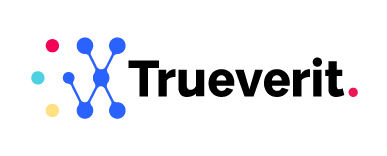INDUSTRIAL INTERNET OF THINGS: A SNAPSHOT
Industrial Internet of Things (IIoT) is a huge opportunity to gain an extra competitive advantage for industrial companies operating in various sectors, not just manufacturing.
SOME DIFFERENCES BETWEEN IOT and IIOT
| PHYSICAL LEVEL | TRANSPORT LEVEL | LOGICAL LEVEL | LATENCY AND PERFORMANCE | SECURITY | |
|---|---|---|---|---|---|
| IOT | Microdimension, Standard hardware |
Prevalence of mobile and Wi-Fi | Data normalization and efficiency are important | Low latency good performances are required | Important |
| IIOT | Special requirements, also in terms of physical resilience | Use of a wide diversity of channels, including Ethernet and LPWLAN | Data normalization and efficiency are vital | Almost no latency is a must; stable performances are vital | Critical |
THE DIFFUSION OF THE INDUSTRIAL INTERNET OF THINGS
If we think of the industrial sector, digitization is bringing substantial advantages in terms of increasing production efficiency, process control, and inputs for environmental sustainability. After the first phase of experimentation, the advantages of the Industrial Internet are evident; even the adoption is gradually growing.
The growth of the Industrial Internet of Things has also been stimulated and pushed also by the Italian National Industry 4.0 Plan, which provides companies with incentives for training, amortization, and super-amortization aimed at modernizing the organization of the factories. Analysts (from Gartner, Bain, Forrester, and IDC to name a few) agree in estimating an average CAGR growth rate between 2017 and 2022 of around 20%.

The Internet of Things Observatory of the Polytechnic University of Milan shows that in 2018 differences between large and small companies are still relevant: 73% of large companies started an IIoT project, but the percentage drops to 29% among small companies.
The road to smarter, more connected, more controlled, and more efficient plants and production processes can be traced and the barriers (such as the absence of a single technological standard, the stratification of machinery of different generations, and safety concerns) are gradually decreasing.
INDUSTRIAL INTERNET OF THINGS: PRACTICAL ASPECTS
Entering the specifics of the topic, at this stage the Industrial Internet of Things shows clear user scenarios and advantages. Methodologies/best practices that guide companies to the adoption of these technologies are also taking shape.
THE INDUSTRIAL IOT SCENARIOS
Use cases vary greatly depending on the industry considered. In our experience, speaking of manufacturing, maintenance (from proactive to predictive) represents the entry level scenario.
We think that the greatest opportunities are derived from the complete, IoT-driven control of processes and production systems, which monitor all the necessary information from a single access point in a simple and quick real-time way.
The opportunity to improve the process of developing new products, based on data collected from them, has also a substantial strategic value.
In the smart building sector, we monitor building energy consumption through building automation based on real occupancy. For example, adaptation of light and comfort levels according to the actual occupation of the rooms.


When it comes to utilities, we have received the most Industrial Internet of Things application feedback from security monitoring and service interruption prevention.
The supply chain becomes smart, for example, when IoT technologies track inventory levels, generate an automatic alert, and place a reorder before the stock runs the risk of fully depleting.
Finally, the energy and telecommunications sector is not immune. IIoT is applied in data center processes and facilities to improve efficiency, resilience, and business continuity, thanks to the insights that comes from the data.
Therefore, the application of IIoT spans across the majority of industries.
INDUSTRIAL INTERNET OF THINGS: HIGHLIGHTS AND BENEFITS
The advantages of IIoT are manifold: the possibility to anticipate and prevent possible failures by controlling plants and processes, or to know if production is in line with expectations or being underutilized and, therefore, has bigger potential capacities.
IoT enables centralized monitoring/remote management of connected objects that are geographically distributed throughout the territory. This offers the possibility of optimizing their own intervention activities or setting up new types of service contracts.
A big benefit, in energy-intensive industries, comes from energy control, which allows for optimization of energy consumption and more sustainable energy supply policies.
Digital Twin, which is the digital representation of an object, and its behavior and integration into the operating environment, allows companies to check if the asset and process operations are in line with expectations and to identify the causes of any anomalies by comparing the real asset with its digital image.
Not only efficiency but also productivity, sustainability, and customer experience are the key advantages of Industrial IoT, which are all based on intelligent data interpretation.
INDUSTRIAL IOT: ADOPTION MODEL
As IIoT technologies are not yet used on a large scale, our approach to digitization is gradual and typically consists of three steps.
Before having a fully interconnected factory, we need to connect it to equip the sites, plant facilities, and machinery with a network that supports data capture and transport. From the simple collection and analysis of the data of a plant or machinery, it is possible to extrapolate, historicize, and analyze information useful to understand and improve its behavior.
The next step is to interconnect the various assets and production lines providing an overall view. The last step, the most advanced maturity model, concerns the integration between the field/production systems and other business applications.
This is the moment in which IIoT generates the most value: the traditional technological and organizational fracture between the OT world and the IT world is mended to better manage operations in a global, more strategic logic, with an impact also on finance, marketing, logistics, and R&D.
IIOT MATURITY MODEL

WE’RE HERE TO HELP YOU
Are you looking to understand IoT blending better? Want to learn more about the IIoT applications we can enable? Ready to see what makes us special? We’re happy to take the challenge and organize a one-on-one demo. Fill out the form to get started.






